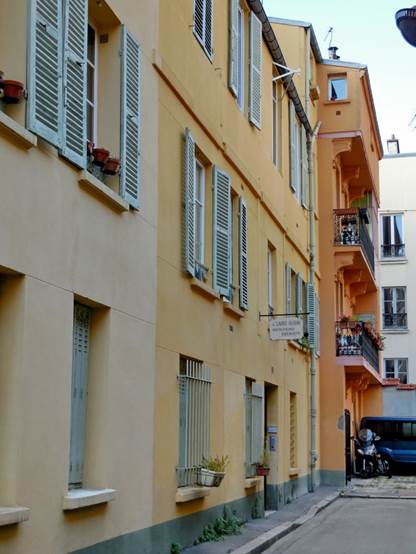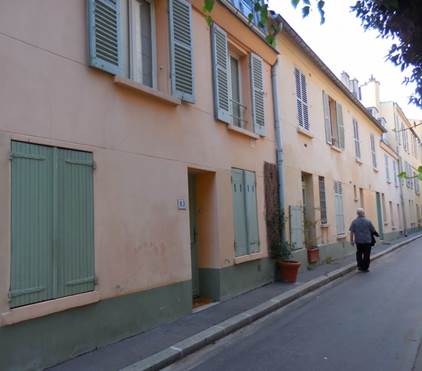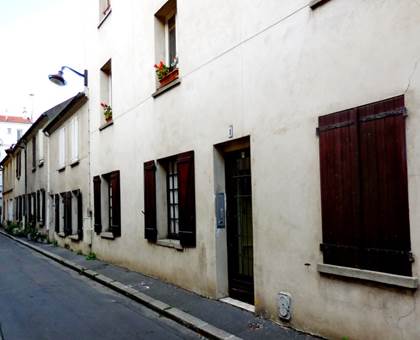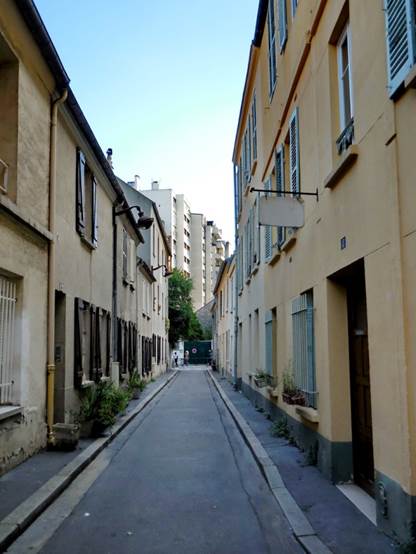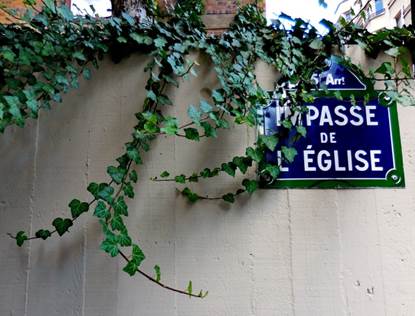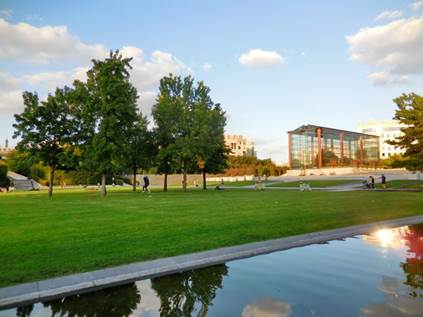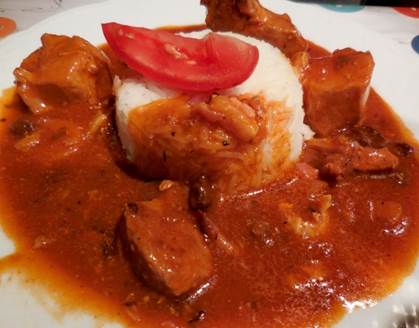Paris Journal 2014 – Barbara Joy Cooley Home: barbarajoycooley.com
Find me on Facebook 2013
Paris Journal ← Previous Next
→ << Back to the beginning
|
I gazed at the map of 15th, casually wondering where we might walk before dinner. Our reservation was at La Table d’Hubert, near the terminus of the avenue Félix Faure. On such a beautiful Autumn day, I naturally thought about the Parc André Citroën. What route should we take? What streets do we want to visit, I asked myself, during our last several days in the 15th for this summer? The rue Saint Charles came to mind. Its terminus is near the most southerly corner of the great park. Suddenly I realized that we’d not walked down the rue de l’Église in a long time. No wonder that is a calmer street, I thought as I noticed that the rue de l’Église, unlike many of its parallel mates, does not go all the way through to the western edge of the 15th. It can’t be used as a through-street by frenzied Parisian drivers. So just as we walked past the Église Jean-Baptiste de Grenelle, we turned right on the rue de l’Église. There the quiet was such that we could hear a couple of nearby pedestrians speaking softly into their mobile phones. Soon after we began our stroll down this calm street, I noticed an even calmer, narrow lane to the right. It was lined with charming, mostly two-story buildings that remind me of the workshops and worker housing that once covered vast sections of this 19th Century industrial quarter. The stucco covering the buildings on one side of the street had been painted the soft pastel shades that you see in Nice, far to the south of Paris. On the other side, the stucco was a cream color, and the shutters were natural brown wood, looking more like France over toward Alsace-Lorraine or Switzerland. The little lane is called the impasse de l’Église, because it ends in a workshop’s courtyard. (An “impasse” is a narrow, dead-end street.) Tom noticed an old-fashioned sign projecting from the façade of number 8, one of the Nice-colored buildings near the far end of the impasse. He ventured down the lane to investigate. I followed behind, taking photos along the way. The sign informed us that this was the Jacques Saint Aubin workshop: ébénisterie d'art et restauration de meubles, according to the Yellow Pages. Monsieur Saint Aubin is a carpenter who makes and restores fine wood furniture. A web search tells me that there are a number of carpenters with the Saint Aubin surname (and a variety of different first names) scattered throughout France and Canada. Could it be a family of carpenters that has roots going back for many centuries? You’ve no doubt seen those oh-so-French little tables with gorgeous, elaborately inlaid wood designs called marquetry? That beautiful work is done by an ébéniste. The word originates from these furniture-makers’ traditional work with ebony wood. The door at number 8 had a simple “Ébenisterie” sign one side, while the other side stood open. I wondered if the courtyard and workshop building at the dead end of the street were perhaps the places where the wood-working was really done. The French word ébéniste has evolved now to basically mean cabinet-maker. In the Yellow Pages, many listed as ébénistes are skilled makers/installers of kitchen cabinets. But this one, on the impasse de l’Église, is more than that, I suspect, since his work is described as the “art and restoration of furniture.” After exploring the impasse de l’Église, we moved on, beginning our stroll down the rue Saint Charles. Across the street, we noticed one of those charming old Art Deco façades for a former dairy store or fromagerie that has been preserved, even though the shop is now a vendor of antiques and books. The place was so beautiful in the evening light that Tom had to enter it, and I had to photograph it. Even the old verriere (glass awning) had been preserved, as well as the bold “BEURRE & OEUFS” (butter and eggs) sign. Above the verriere, set into a window, was the name of the current shop, “Au Facteur Cheval Antiquité.” “Facteur Cheval” is a reference to a postman named Ferdinand Cheval who built himself a phantasmagorical palace and a mausoleum in Hauterives, France.
When we finally reached the far end of the rue Saint Charles, we turned toward the park. I noticed a plaque that I’d not seen there before. It is on the same building but around the corner from a more familiar plaque I’d seen in the past – the one that tells the history of the rag-pickers (chiffonniers) and the ubiquitous poubelles of Paris. The new sign tells the story of “Les Dames de Javel:”
The munitions factory of course changed to an automobile factory after WWI. And now it is the site of the great park. We passed through the gates and walked up through the Jardin Noir (black garden) of the Parc André Citroën. When we entered the larger, more open section of the park, we sat on one of the funky, curvy wood benches, separated from the lawn by a strip of water. Guys were kicking a ball about on the grass across the water in front of us. Of course, the ball went into the water, so Tom got up and retrieved it from our side, tossing it back over to the guys on the other side. There were many enthusiastic “merci monsieurs” directed at Tom. The balloon that takes people up for a bird’s eye view of Paris was tied down for the night. People were gradually leaving the park, reluctantly, it seemed, for it was such a beautiful evening. I noticed the reflection of the clouds in the surface of the water (photo below). This is how the idea for Impressionism began, I thought:
Dinnertime approached, so we worked our way back through a maze of streets and walkways to the avenue Félix Faure. La Table d’Hubert already had several tables occupied by the time we arrived, just a few minutes late. We were served lovely little complimentary bisquits and champagne as we perused the menu. Our starter was a shared green salad with roasted red peppers and mozzarella, followed by the pepper steak for me and the special of the day, pork sautéed with raisins in a barbeque-like sauce over long-grain rice for Tom. Yummy!
I gave Tom much of my steak since the cut he received the last time we were there wasn’t as good as the one I had. I wanted him to know just how good this steak really is! Tom had the lemon tart for dessert, and then it was time
to go. We were tired from a long day
of working topped off by a significant walk.
We bade farewell to Hubert, who smiled and waved enthusiastically from
the kitchen doorway at the back of the dining room. Bonne
nuit!
|
Thursday, September 4, 2014
The lawn and one of the greenhouses of the Parc André
Citroën.
One of the guys kicking around a ball on the lawn of the
Park André Citroën.
|








